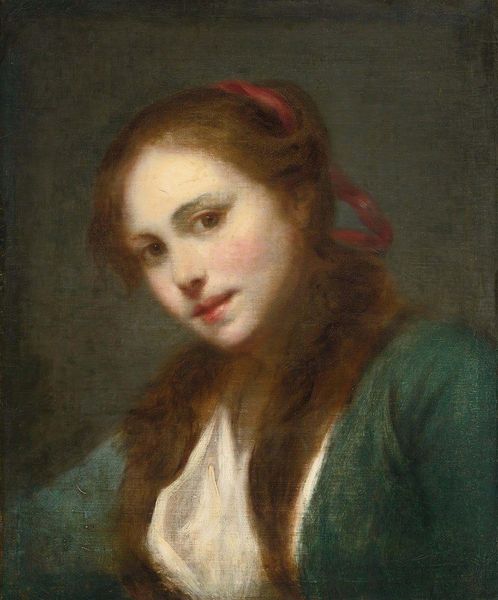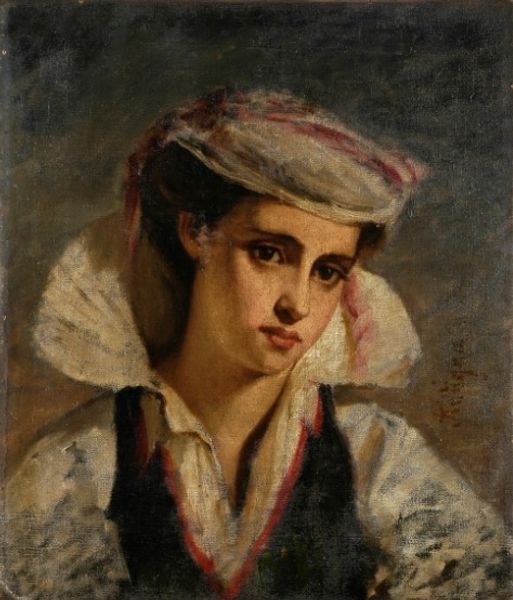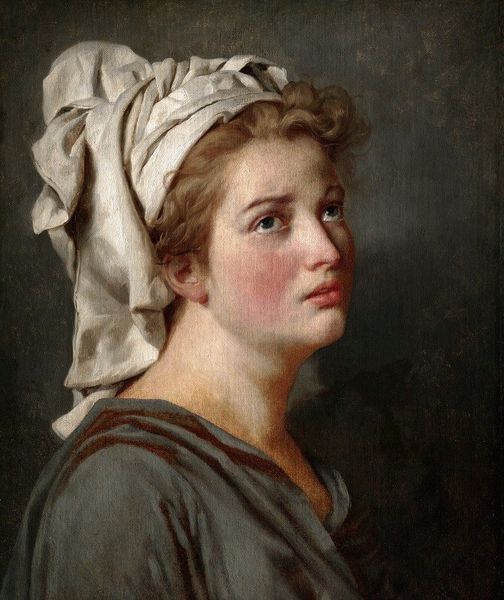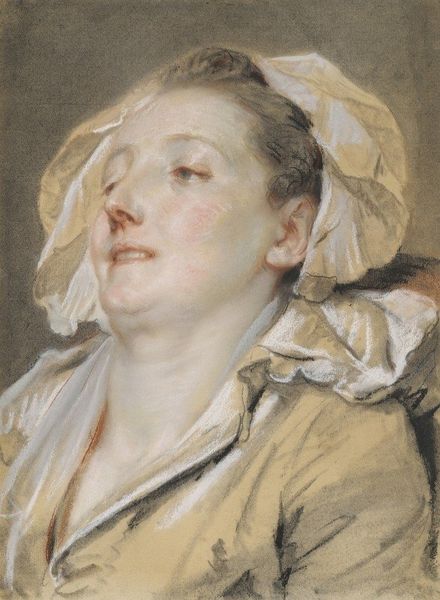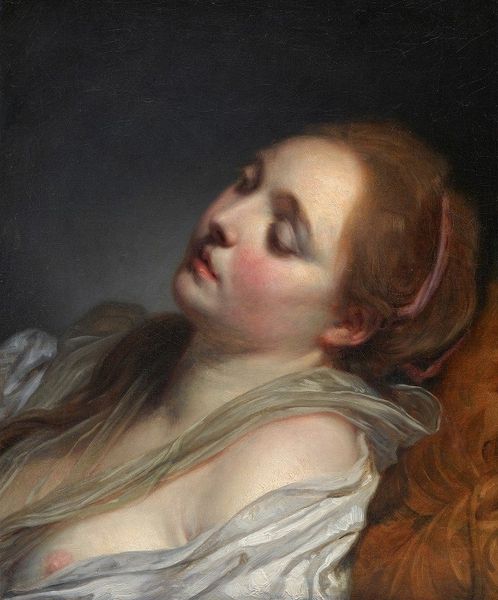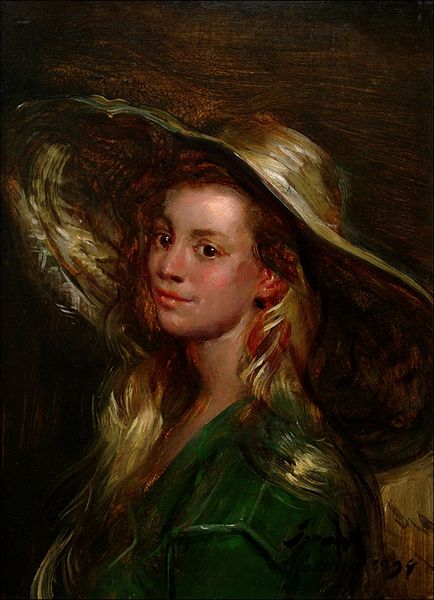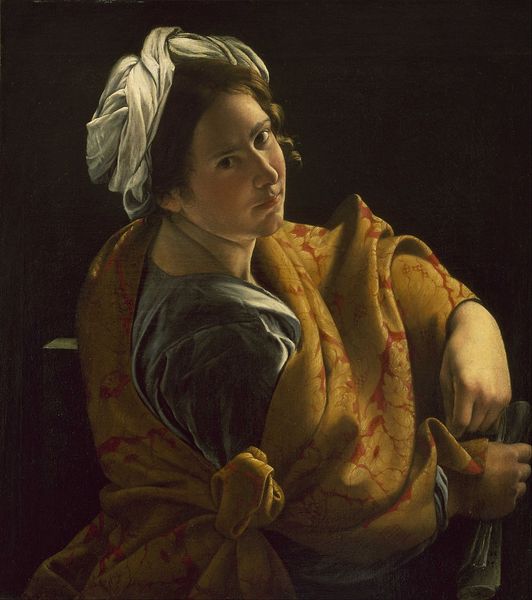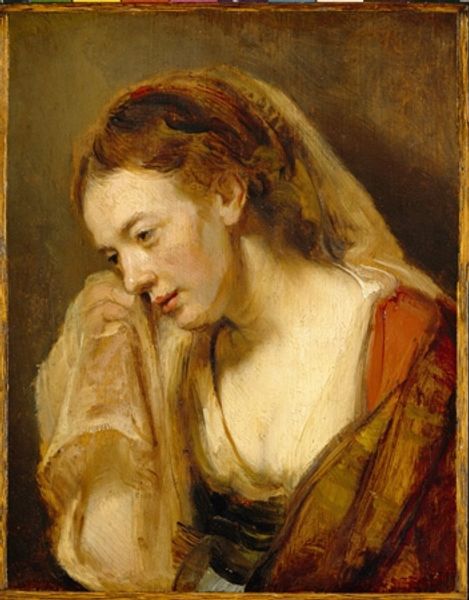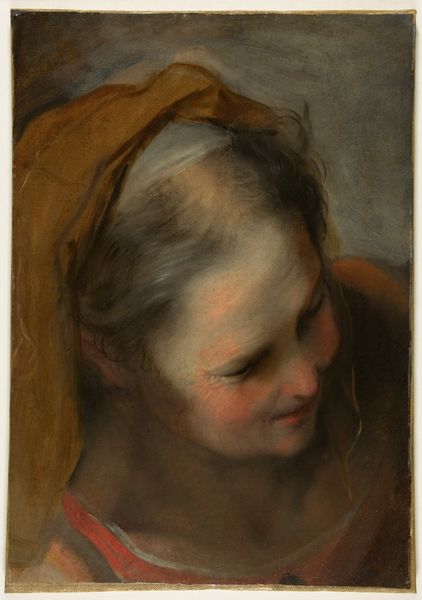
Copyright: Public Domain: Artvee
Curator: Here we have Jean-Baptiste Greuze's "Study of a Woman’s Head," an oil painting from around 1780. Editor: It's remarkable! Her expression holds such complexity; there’s a pensive, almost melancholy air about her. And the way Greuze models her face, it’s delicate but powerfully present. Curator: Indeed. Greuze was known for his ability to capture subtle emotions, part of the broader 18th-century interest in sensibility. We see this in his use of soft, diffused light to create an intimate mood. Also the technique is characteristically Rococo. Editor: Precisely. Look how the light emphasizes her slightly furrowed brow and downcast gaze. You get the sense there's an internal narrative unfolding. The loosely draped fabric, the simple headscarf—it all speaks to a certain modesty, perhaps reflecting a social reality of women from the era. Do you think there is any influence of Classicism in his approach? Curator: Good point. Certainly in the restrained palette – the muted grays and flesh tones—but more in an updated way, reflecting the move away from the frivolity that marked the early Rococo towards something with perhaps a new gravitas. Think about that subtle asymmetry – the slightly uneven knot of her headscarf, that gives life to it. Editor: It creates a more genuine effect. Unlike some more mannered portraits, there’s a raw human quality here. One really gets the feeling that we are looking into the woman’s own soul, and reflecting the shift that was happening within genre paintings that allowed for this new style to have deeper emotive properties. Curator: And consider how this ‘study’ form deviates from formal portraiture, placing it in genre painting in the artist's practice. Greuze wasn't after depicting status so much as character, inner sentimentality as represented on canvas, or perhaps reflecting real political tensions of that time period, maybe this pensive mood wasn't only emotional. Editor: So rather than a depiction of an ideal, you see something…accessible, but definitely of high value and significance to what we perceive now as 'Rococo'. Her slight vulnerability, or 'intimacy' you said before. Curator: Exactly. He used composition to give access to personal aspects through line and movement, texture of paint, tone and value to let us in and give life to our ideas of past peoples and artistic relevance. It is truly stunning. Editor: Yes, it really causes you to consider the painting's place within art history and contemplate this woman's experience and feelings and also our own humanity, as modern-day consumers and scholars.
Comments
No comments
Be the first to comment and join the conversation on the ultimate creative platform.
